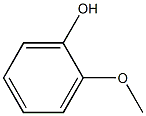Creosote wood

Creosote wood structure
|
Common Name | Creosote wood | ||
|---|---|---|---|---|
| CAS Number | 8021-39-4 | Molecular Weight | 124.13722 | |
| Density | 1.09 g/mL at 20 °C | Boiling Point | 200-220 °C(lit.) | |
| Molecular Formula | C7H8O2 | Melting Point | N/A | |
| MSDS | USA | Flash Point | 74 °C | |
| Symbol |




GHS05, GHS06, GHS08, GHS09 |
Signal Word | Danger | |
|
Microbial populations related to PAH biodegradation in an aged biostimulated creosote-contaminated soil.
Biodegradation 20(5) , 593-601, (2009) A previous bioremediation survey on a creosote-contaminated soil showed that aeration and optimal humidity promoted depletion of three-ringed polycyclic aromatic hydrocarbons (PAHs), but residual concentrations of four-ringed benzo(a)anthracene (B(a)A) and ch... |
|
|
Degradation of PAH in a creosote-contaminated soil. A comparison between the effects of willows (Salix viminalis), wheat straw and a nonionic surfactant.
Int. J. Phytoremediation 12(1) , 54-66, (2010) The degradation of polyaromatic hydrocarbons (PAH) in an aged creosote-contaminated soil in the presence of Salix viminalis was investigated in a greenhouse experiment. Phenanthrene and pyrene were degraded 100% and 80%, respectively, in the presence of plant... |
|
|
Self-sustaining smoldering combustion for NAPL remediation: laboratory evaluation of process sensitivity to key parameters.
Environ. Sci. Technol. 45(7) , 2980-6, (2011) Smoldering combustion has been introduced recently as a potential remediation strategy for soil contaminated by nonaqueous phase liquids (NAPLs). Published proof-of-concept experiments demonstrated that the process can be self-sustaining (i.e., requires energ... |
|
|
An integrated assessment of sediment remediation in a midwestern U.S. stream using sediment chemistry, water quality, bioassessment, and fish biomarkers.
Environ. Toxicol. Chem. 32(3) , 653-61, (2013) A comprehensive biological, sediment, and water quality study of the lower Little Scioto River near Marion, Ohio, USA, was undertaken to evaluate the changes or improvements in biotic measurements following the removal of creosote-contaminated sediment. The s... |
|
|
Functional genes reveal the intrinsic PAH biodegradation potential in creosote-contaminated groundwater following in situ biostimulation.
Appl. Microbiol. Biotechnol. 84(1) , 169-82, (2009) A small-scale functional gene array containing 15 functional gene probes targeting aliphatic and aromatic hydrocarbon biodegradation pathways was used to investigate the effect of a pilot-scale air sparging and nutrient infiltration treatment on hydrocarbon b... |
|
|
A versatile cryo-focussing flow switching gas chromatography inlet for trace analysis of intractable compounds.
J. Chromatogr. A. 1257 , 171-88, (2012) A wide variety of samples that can be analysed by gas chromatography do not lend themselves to the usual preparation of solvent extracts for split-splitless injections, and are best handled by purge and trap or equilibrium headspace sampling. A cryo-focussing... |
|
|
Biotransformation enzyme expression in the nasal epithelium of woodrats.
Comp. Biochem. Physiol. C. Toxicol. Pharmacol. 157(1) , 72-9, (2013) When herbivores come in contact with volatile plant secondary compounds (PSC) that enter the nasal passages the only barrier between the nasal cavity and the brain is the nasal epithelium and the biotransformation enzymes present there. The expression of two ... |
|
|
Two cases of gastric Anisakiasis for which oral administration of a medicine containing wood creosote (Seirogan) was effective.
Hepatogastroenterology. 58(109) , 1252-4, (2011) Anisakiasis is a disease characterized by an abrupt onset of sharp epigastric pain, which occurs typically a few hours after eating raw or undercooked seafood. Anisakiasis was a Japanese localized disease in the past, however has become an illness of concern ... |
|
|
Diversity of fungi in creosote-treated crosstie wastes and their resistance to polycyclic aromatic hydrocarbons.
Antonie van Leeuwenhoek 97(4) , 377-87, (2010) This study was conducted to generate information regarding the diversity of fungi inhabiting creosote-treated wood in a storage yard for crosstie wastes in Gwangmyeong, Korea. Additionally, the resistance to polycyclic aromatic hydrocarbons (PAHs) of indigeno... |
|
|
A comparative toxicity assessment of materials used in aquatic construction.
Arch. Environ. Contam. Toxicol. 61(3) , 368-75, (2011) Comparative toxicity testing was performed on selected materials that may be used in aquatic construction projects. The tests were conducted on the following materials: (1) untreated wood species (hemlock [Tsuga ssp], Western red cedar (Thuja plicata), red oa... |